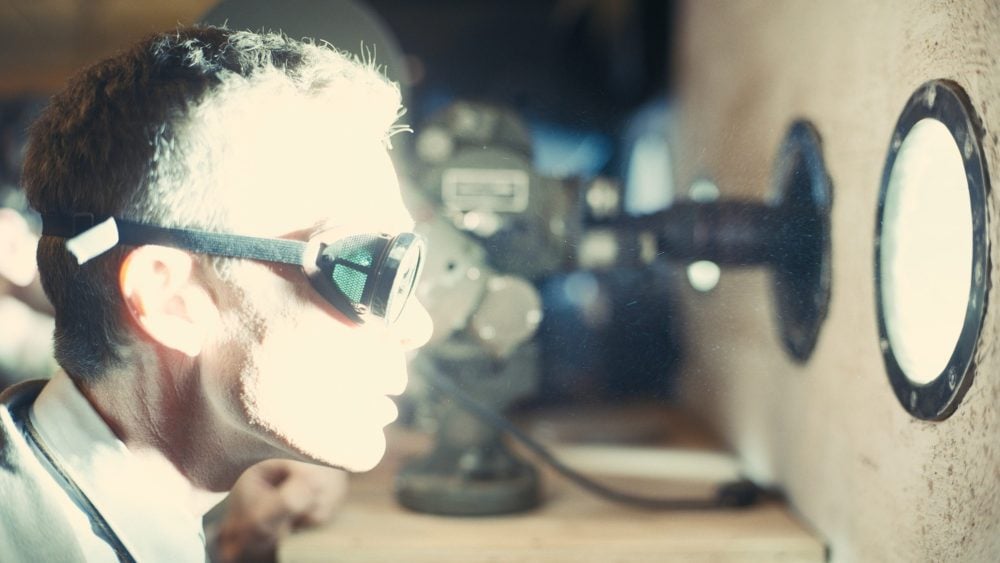Ryan Knapp woke up before sunrise one morning in July and left his home in northern New Hampshire at 5:30 a.m. to catch a movie.
It wasn’t just any day at the cinema. In fact, it was a 14-hour round-trip journey that involved crossing two state lines by car, train and bus. That’s because Knapp wanted to see Christopher Nolan’s “Oppenheimer” the way the director intended: in Imax 70mm, a rare format crafted from Nolan’s film negative, with physical reels spanning 11 miles and weighing 600 pounds. It’s a movie nerd’s dream — but it’s only available on 30 screens worldwide, 19 of them in the U.S.
So Knapp trekked to Providence, R.I., for a 2 p.m. showing. The verdict? “It was definitely worth it.”
“Oppenheimer,” an R-rated three-hour drama consisting mainly of people talking in rooms, is not the type of movie audiences typically clamor to see on premium screens. Yet Imax accounted for a whopping 20% of the film’s $180.4 million global opening. And the company’s share of the movie’s box office haul has increased each successive weekend, with the 70mm version raking in $17 million to date, an astounding figure for such a limited format.
Audiences have flocked to Imax screens because they offer an experience that cannot be replicated at home, according to box office analyst Jeff Bock, and “when a Christopher Nolan film comes out, that is an event in and of itself.” Plus, premium large formats like Imax 70mm are “a cinephile argument that has now carried over into the mainstream.”
According to Nolan, Imax 70mm is the ideal cinema experience because “the sharpness and the clarity and the depth of the image is unparalleled.” But there are serious limitations when it comes to bringing the format to a wider audience. For one, Imax has only 30 Imax film projectors in rotation worldwide, and it takes three days to create each print. Since most theaters have switched over completely to digital projection, the company worked for two years to evaluate, reinstall and fix Imax 70mm projectors, sending tech teams to every site to perfect the audiovisual components. With “Oppenheimer,” Imax oversaw the hiring of 50 film projectionists globally and helped develop the first-ever Imax 70mm black-and-white film, bringing some of Kodak’s more experienced personnel out of retirement in the process.
Due to popular demand, Imax has twice extended “Oppenheimer’s” 70mm run. But on Sept. 1, exhibitors will have to cede those screens to Denzel Washington’s “The Equalizer 3.”
Love Film & TV?
Get your daily dose of everything happening in music, film and TV in Australia and abroad.
“We really want to support Chris and the movie in every way we can, but we have to balance that with our other commitments,” says Richard Gelfond, CEO of Imax. “We’ll play it by ear and see where it goes.”
Mark Jafar, Imax’s global head of corporate communications, adds, “Imax 70mm film lasts, on average, 10 times longer than regular 70mm or 35mm film. Those prints are assets that we’ll be using for the next 20 years.” He’s confident that specialty theaters like BFI in London and AMC Lincoln Square in New York will bring back “Oppenheimer” in Imax 70mm for Nolan retrospectives.
But it might return even sooner. With theaters selling out more than three weeks in advance — and fans like Knapp road-tripping to their nearest Imax 70mm showing — it’s likely “Oppenheimer” will come back to premium large formats after moviegoers have checked out “The Equalizer 3.”
As Imax 70mm continues to permeate the mainstream and draw in younger auteurs like Jordan Peele and Damien Chazelle, Gelfond’s hope is to “find more projectors and refurbish them.”
“It’s an art form that’s been fading away,” he says. “Imax is all in on trying to keep film alive.”
With $134 million generated from “Oppenheimer” alone, the premium film-tech company is largely responsible for bringing multiplexes out of the pandemic slump. “If Hollywood is going to invest in one thing,” says Bock, “it should have almost everything to do with Imax.”
From Variety US































